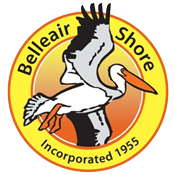 After the Storm
After the Storm
In the hours following a hurricane, police, fire and EMS services may have difficulty reaching you if you had not evacuated. Emergency crews will need to wait for flood waters to subside and roads have been cleared to be able to respond to emergency calls and assess damage. You must rely on what you have stored for food, medications and entertainment.
- Only call 911 in the case of a police, medical or fire emergency.
- If you need information, call the County Information Center at 727-464-4333.
- Shelter in place. Do not attempt to travel. If you must go outside of your home, be mindful of dangers like downed power lines or contaminated floodwater.
- Assume that there is a boil water notice in place until you hear differently.
- Take photos of your property for insurance. Take immediate steps to reduce flood damage.
- Check on your neighbors. Share food, and take care of each other.
- If you want to volunteer, call the County Information Center to get connected with agencies and areas in need.
- Set up a carbon monoxide detector before running a generator. Follow all manufacturer guidelines.
- Do not put anything on the stove. Items left on the stove will cause a fire when the power comes back on.
Chainsaw Safety
Use caution when operating a chainsaw to clear downed trees and branches.
Before starting the saw:
- Read your owner’s manual.
- Wear proper safety gear, including eye and hearing protection, heavy work gloves and work boots.
- Check controls, chain tension, and all bolts and handles to ensure they are functioning properly.
- Fuel your saw at least 10 feet from sources of ignition.
- Clear debris that may interfere with cutting.
While running the saw:
- Keep hands on the handles, and maintain secure footing.
- Do not cut directly overhead or overreach with the saw.
- Be prepared for kickback.
Driving Safely
Even after major roadways are clear and it is safe to drive, streets may seem unfamiliar and driving conditions could be dangerous.
- If traffic lights are not working, treat an intersection as a four-way stop sign.
- Do not drive through standing water. You will not know the depth of the water, nor will you know the condition of the road under the water.
- Match your speed to road conditions. Cars can quickly become uncontrollable when driving on damaged, debris-choked roads.
- Visibility may be limited. Increased traffic on congested roadways and large trucks can obstruct your line of sight.
- Maintain a safe distance from the car in front of you.
- Traffic patterns may be shifted in work zones. Obey posted work zone speed limits at all times. Be aware of equipment and workers.
- Constantly scan for pedestrians who can quickly lose their footing.
- Obey all “road closed” signs. Just because you cannot see road damage does not mean it is safe.
- Treat any intersection with non-working traffic signals as an “all-way” stop. Be prepared to stop at every intersection.
- Not all damaged or destroyed road signs have been replaced. Be prepared to yield or stop unexpectedly.
- Know where you are going and give yourself ample time to get there.
- Drive with lights on and slow down.
Debris Cleanup
Each municipality and unincorporated area of the county partners with different companies for waste management. Residents need to check with their city or their hauler on how to dispose of yard debris, trash and large items.
- Normal daily schedules and processes will likely be different after a storm. Residents must be patient as officials address the most urgent needs first.
- Wait for instruction from your city or the county, or watch the news.
- If you live on a private road, you need to plan ahead for your own debris disposal.
- Contractors are responsible for debris removal. That is included in their fees. If you hire a contractor to cut down a tree or do repairs, then be sure they are licensed and fulfill their responsibilities.
Report Power Outages
CLICK HERE to Report any power outages to Duke Energy or call 800.228.8485
